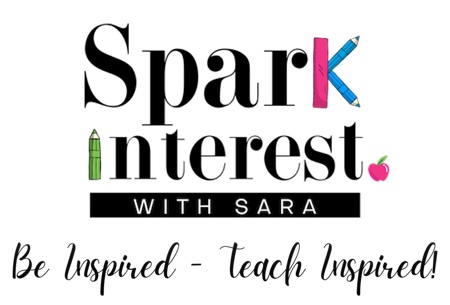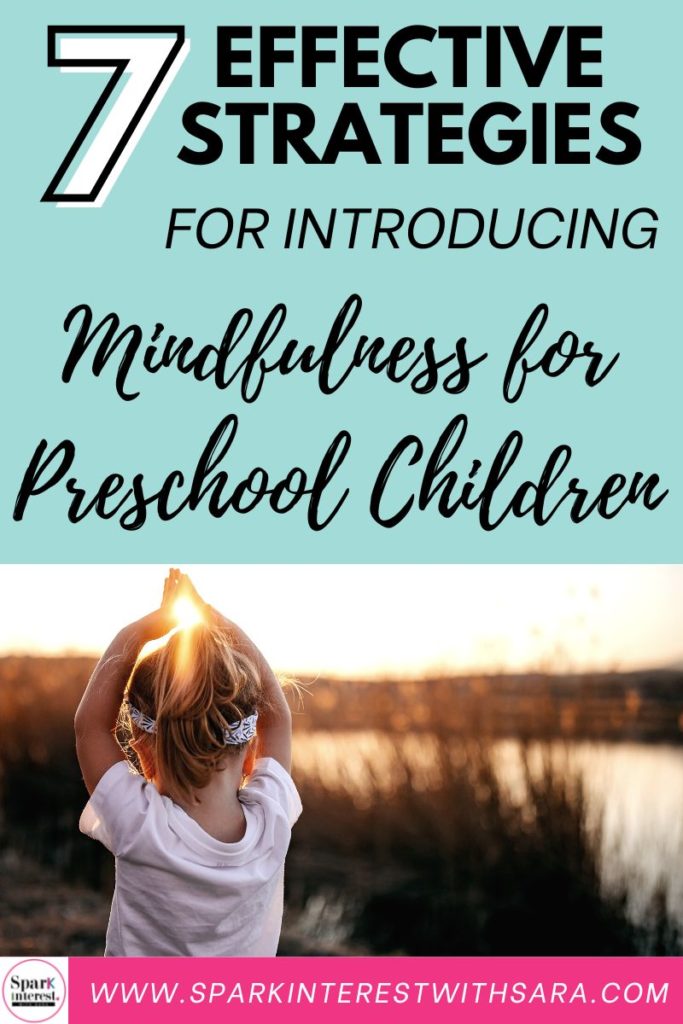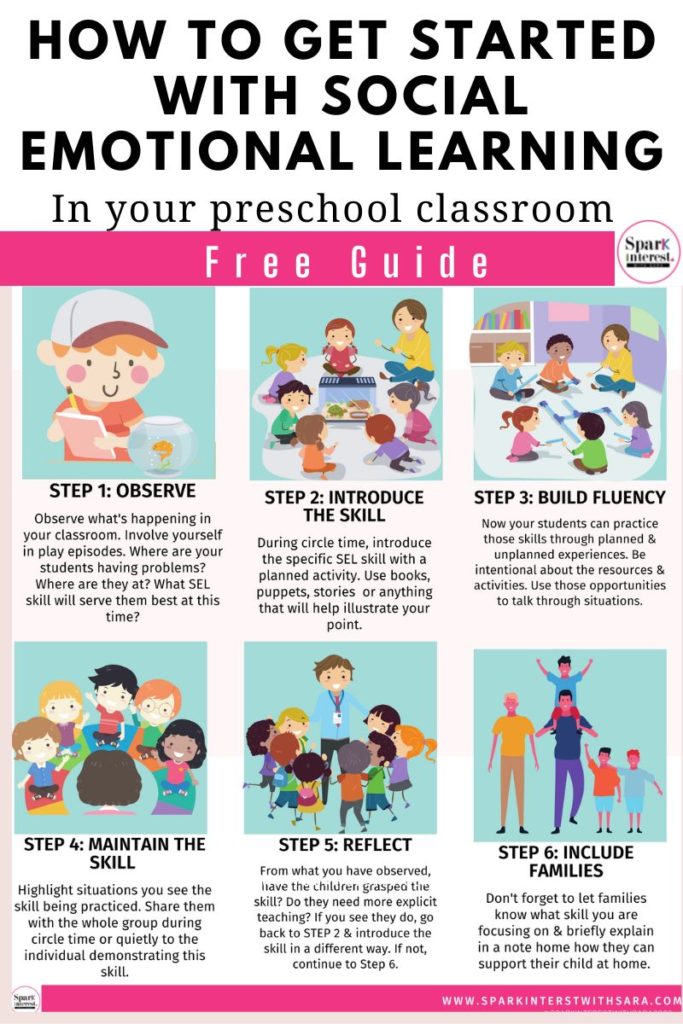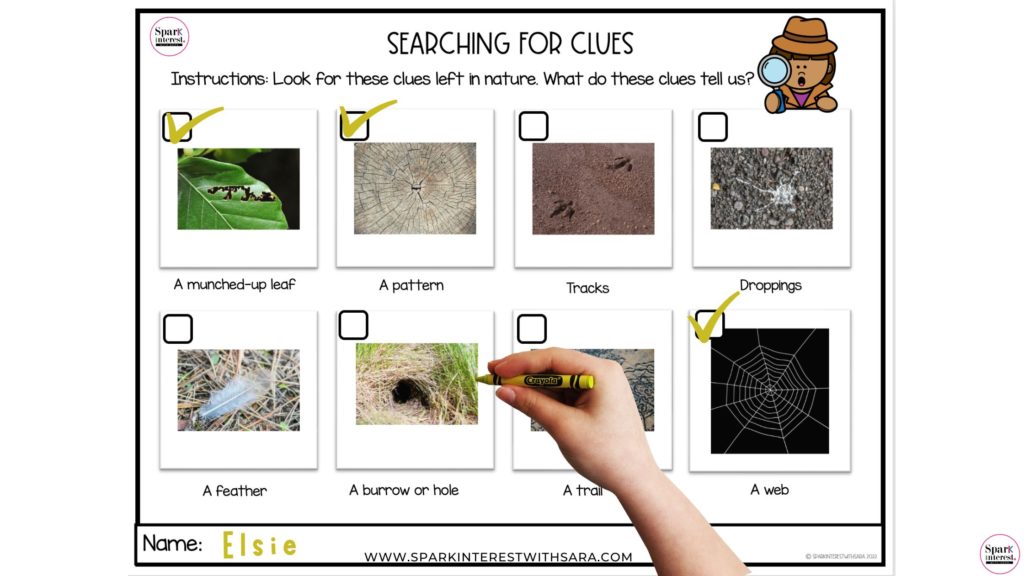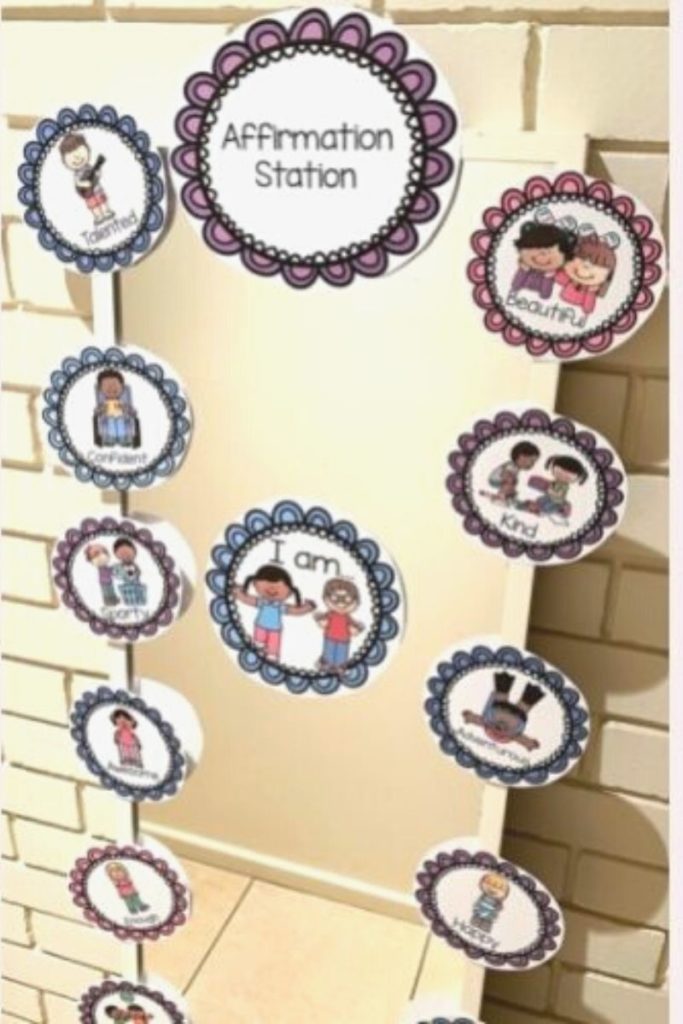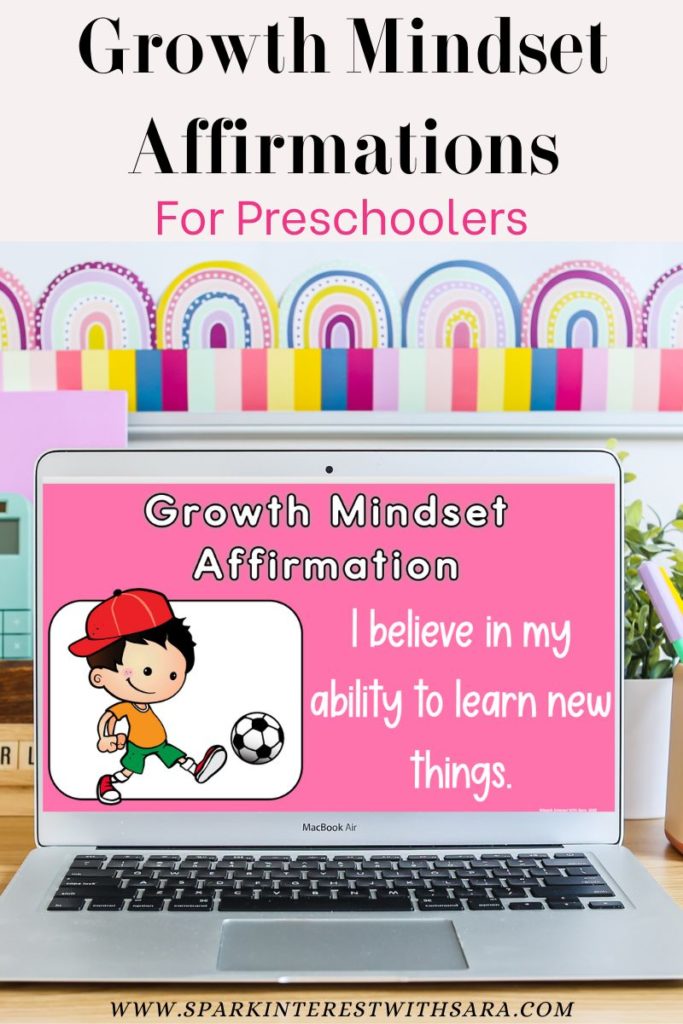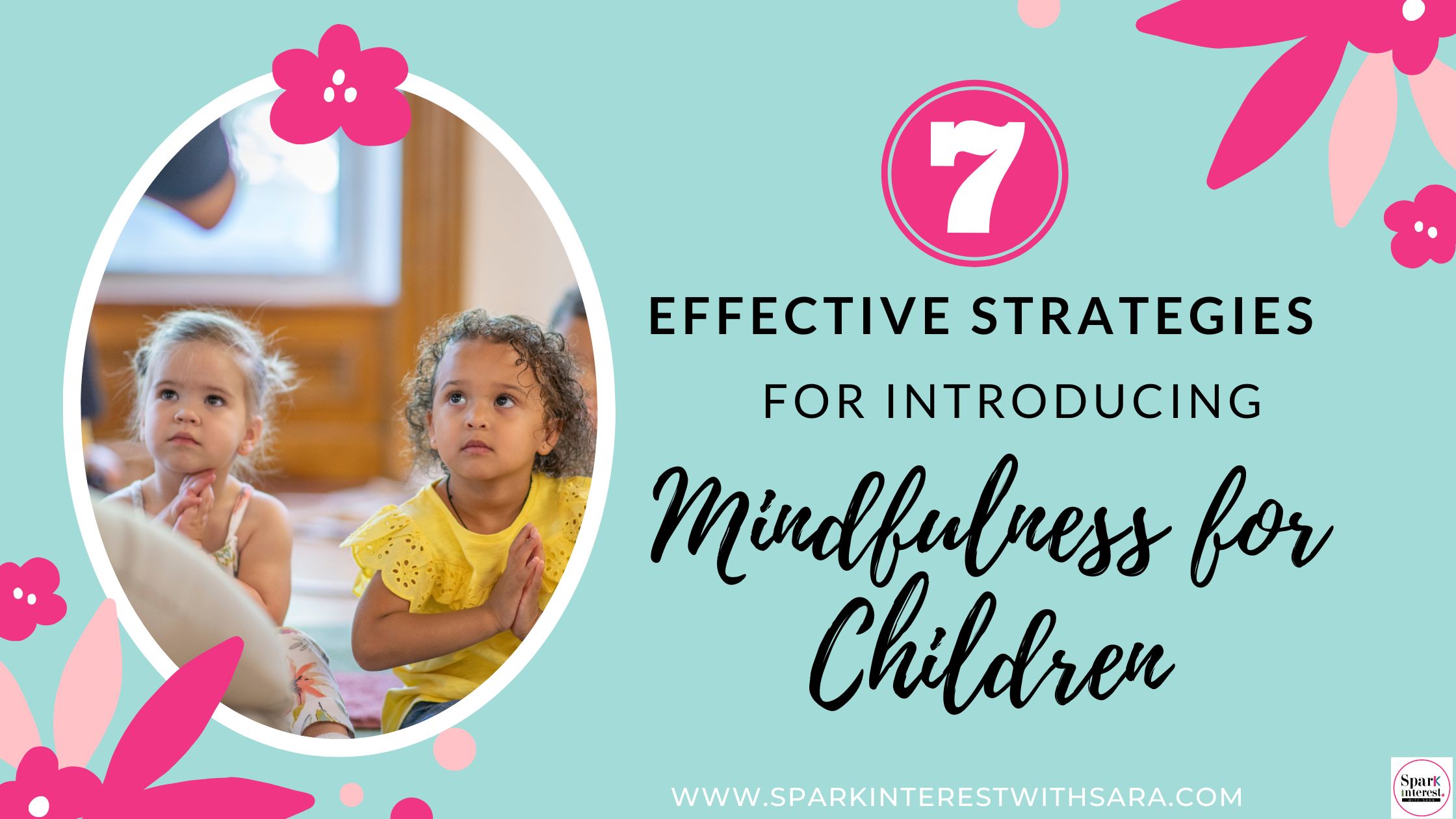
I bet you’re thinking, “Mindfulness for preschool, how is that even possible?” It’s hard enough for us grown-ups to bring mindfulness into our daily lives so how can we expect children to be mindful and how can we help them develop that practice?
What if I told you mindfulness is already happening in your classroom? What if I told you our young learners are built for mindfulness?
Just think about that child who stops to watch the ants marching in a row in and out of an ant hole. How about a child focused on drawing a picture of their family … another who delicately places the last block at the top of a tower, taking deep breaths … these are mindful practices! They happen everyday in our classrooms and we often don’t even realize it’s happening.
Before I jump into more detail on how you can incorporate more mindfulness practices in your classroom, I wanted to share my free SEL guide for preschool teachers. Click on the image to grab the planning sheet and other cheat sheets I created to help you easily integrate social emotional learning into your preschool curriculum.
What is Mindfulness?
Teaching mindfulness to preschoolers is an amazing process, and the change you’ll see in each student is unmatched. Before teaching, you must first understand what mindfulness is exactly. Mindfulness, by definition, is a mental state achieved by focusing one’s awareness on the present moment while calmly acknowledging and accepting one’s feelings, thoughts, and bodily sensations.
In the simplest words, mindfulness means you are living in the moment without judgment. When a thought pops into our heads, we often go to the past or think of the future. The what-ifs! Mindfulness techniques help us refocus and bring our attention to the present moment, noticing what is happening in the moment.
The Importance of Mindfulness for Kids
Bringing mindfulness into the preschool classroom comes with great benefits for all students.
- Increased focus, attention, self-control, classroom participation, and compassion.
- Improved academic performance, ability to resolve conflict, and overall well-being.
- Decreased levels of stress, depression, anxiety, and disruptive behavior.
What we want, is to help our preschoolers with noticing their emotions and ultimately being able to manage them. They also will be more open to tackling challenges and trying new things with a more neutral state of mind.
How to Teach Mindfulness to Preschoolers
When teaching mindfulness in the preschool classroom, you have to come up with creative and fun ways to help students learn and practice a variety of techniques. There are many ways to help your students become more aware of their emotions (and others), stress levels, and teach them how to live in the moment.
Some Teacher Tested Being Mindful Techniques
Interactive Mindful Exercises for Kids
One of the easiest ways to get started when it comes to teaching mindfulness to preschoolers is to bring in some fun and interactive mindful exercises for kids. So what do I mean by interactive mindfulness exercises? It means we want to get our young learners moving and interacting with the mindfulness technique we want to teach.
Some mindful exercises that you can easily bring into the classroom are:
- Yoga stories (Cosmic Kids Yoga is always a favorite) – Instead of just teaching a yoga pose, how about incorporating a story with the yoga movement? That adds another dimension to the activity.
- Blend Craft Activities with Mindfulness Techniques – When introducing a mindfulness technique how about adding a craft activity to go with it. Your students will love being able to take home a craft that represents a mindful technique that was introduced that day. My students have loved taking home their own decorated cookie when I introduced the Cookie Breathing Technique!
- Mindful coloring – This can be done in different ways. You could play music and invite your students to quietly color-in a picture or if stencils aren’t your jam, then provide a blank sheet of paper with beautiful colors for your students to draw and color. Encourage your students to listen and draw how the music makes them feel.
Another way you can incoporate mindful coloring is to have guided coloring sheets. For example a sheet with a face left blank and your students have to draw how they are feeling and what makes them feel this way.
- Teaching breathing techniques – As I have learnt more about the power of breath in my own mindfulness practice, I have wanted to transfer this knowledge to my youngest learners because our breath has the immense power to focus and calm us. Dragon breath, Cookie breathing, Count to Five, Candle Breathing are just a few of the breathing techniques my students have loved.
I hope these mindful exercises have inspired you to introduce a few into your classroom routine. You want these techniques to be part of your daily routine. As they become a normal integrated part of your day, your preschoolers will start to use mindfulness techniques without even realizing it.
Mindfulness for Preschool Outdoor Activities
If you are looking for a way to not only help your preschoolers become more mindful but also get outside, then you may want to send your students on a mindful scavenger hunt. Students can take some time to really focus on their surroundings, the colors, feelings, objects, and more. Slowing down can sometimes be difficult for some of our preschoolers, but these types of scavenger hunts are a great tool!
Create a Calm Down Corner
A calm down corner can easily be created in a few easy steps and can give students who have trouble regulating their emotions a place to relax and come back to the activity or lesson in the correct mindset.
There are some essential items you will want for your corner. I include pillows, books, a basket of calm down items like cuddly toys, books, posters, a sand timer, mindfulness coloring in sheets, stress balls, calming strategy cards, a feather (for breathing), a Pop-It, bubbles & Yoga Cards. You can even put an affirmations mirror in your classroom!
Having a designated space allows your students to know there is a safe space for them to go when they need to calm down or have a quiet moment.
Positive Affirmations
Bringing positive affirmations into your morning routine, circle time, or even giving students affirmation coloring sheets are all great ways to help teach mindfulness in the preschool classroom.
Having students repeat positive affirmations daily has many benefits, like decreasing stress, controlling negative thoughts, creating positive coping skills, and increasing self-esteem. You can even bring in some growth mindset affirmations as well! This positive self talk can increase confidence, overall well-being, enhance self-esteem and most importantly teach children a valuable tool to support themselves.
Focus on one a week and make that affirmation the guide for the week. Introduce it at group time, then display it. As the week goes on, highlight different times you have noticed the growth mindset affirmation being practiced.
For example, if the growth mindset affirmation is, “I improve with practice.” then for the rest of the week, if you see your student practicing a skill and improving, bring that story to group time and share it with everyone. Take it a step further and write it on a post-it and place it around the growth mindset affirmation!
Mindfulness for Preschool
When you are bringing mindfulness into the preschool classroom, you’ll clearly see all the benefits and the effects it has on students. Preschool mindfulness activities will allow your students to learn not only exactly what mindfulness is but ways to bring mindfulness into their own lives, even at a young age!
Want to learn more? Check out these blog posts below:
The 6 Important Benefits of Positive Affirmations for Preschoolers
Mindful Exercises for Kids: 6 Easy and Effective Activities for Your Classroom
Let's Connect:

Sara
